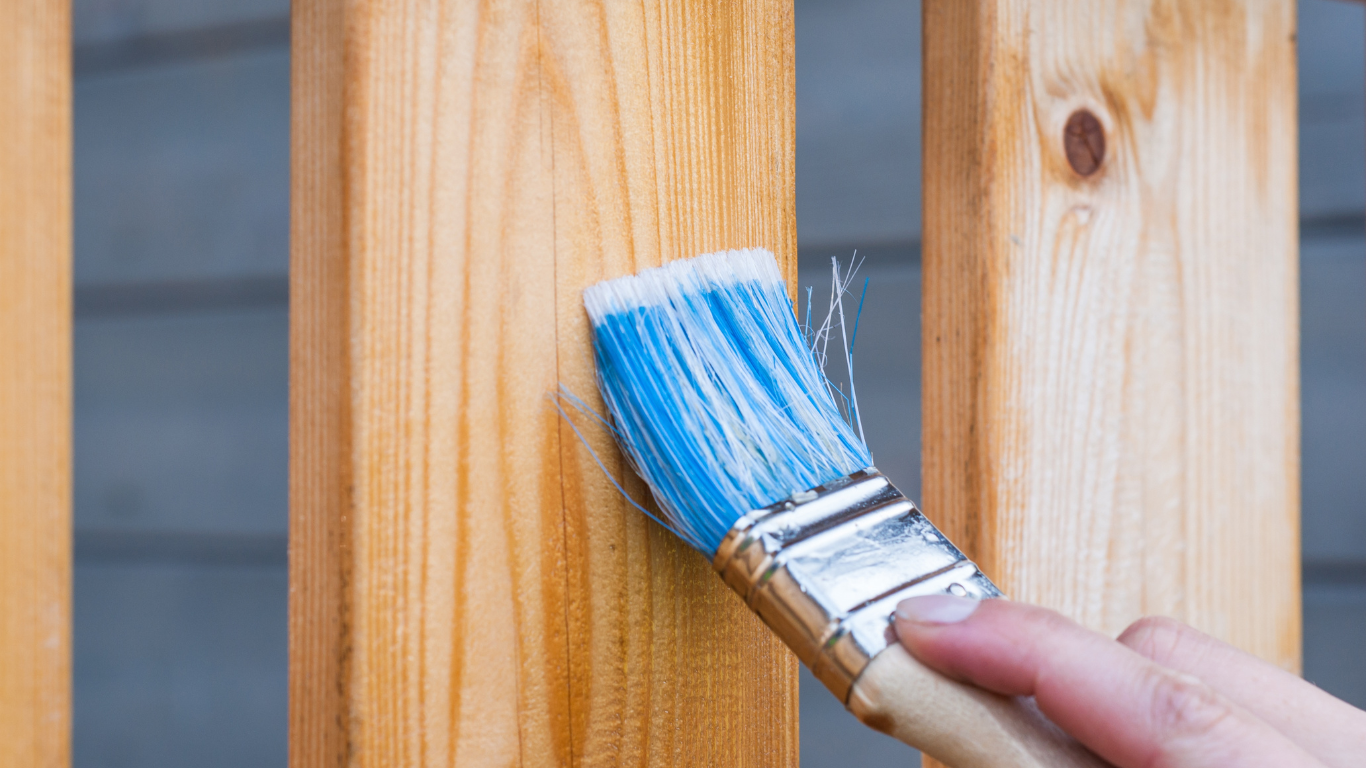Woodworking and painting enthusiasts often seek ways to enhance the beauty and durability of their projects. One common question arises: Can you use linseed oil over painted wood? In this comprehensive guide, we will explore the properties of linseed oil, its application on painted surfaces, and its benefits and limitations. By the end of this article, you’ll have a clear understanding of whether linseed oil is suitable for your painted wood projects and how to use it effectively.
Understanding Linseed Oil
What is Linseed Oil?
Linseed oil is a natural oil derived from the seeds of the flax plant (Linum usitatissimum). It has been used for centuries as a drying oil in paints, varnishes, and wood finishes due to its unique properties. When exposed to air, linseed oil undergoes a process called oxidation, allowing it to harden and create a protective layer on surfaces.
Types of Linseed Oil
There are three main types of linseed oil used in woodworking and painting:
- Raw Linseed Oil: This is unprocessed linseed oil that takes a long time to dry. It is ideal for use in oil-based paints and can be used for a slow, traditional finish.
- Boiled Linseed Oil: This type is processed with heat and often contains drying agents that accelerate drying time. Boiled linseed oil is more commonly used in woodworking because it cures faster than raw linseed oil.
- Stand Oil: This is a thicker form of linseed oil that is partially polymerized. It produces a high-gloss finish and is often used in fine art painting.
Properties of Linseed Oil
Linseed oil has several properties that make it valuable in woodworking and painting:
- Drying Time: Depending on the type, linseed oil can take anywhere from several hours to days to dry fully. Boiled linseed oil dries faster due to the added drying agents.
- Penetration: Linseed oil penetrates deeply into the wood, providing protection against moisture and enhancing the wood grain.
- Finish: It imparts a warm, amber hue to the wood, enhancing its natural beauty.
- Flexibility: Once cured, linseed oil remains flexible, allowing it to withstand changes in temperature and humidity without cracking.
Benefits of Using Linseed Oil
Using linseed oil on wood surfaces offers several benefits:
- Enhanced Durability: Linseed oil protects the wood from moisture, UV rays, and other environmental factors, extending its lifespan.
- Natural Finish: It provides a natural, hand-rubbed appearance that highlights the wood grain without the plastic look of synthetic finishes.
- Easy Application: Linseed oil is easy to apply with a cloth or brush, making it accessible for DIY projects.
- Non-toxic: As a natural product, linseed oil is non-toxic and environmentally friendly, making it suitable for indoor applications.
How Linseed Oil Interacts with Painted Surfaces
Compatibility with Paint Types
When considering using linseed oil over painted wood, it’s essential to understand how it interacts with different types of paint:
- Oil-Based Paints: Linseed oil is generally compatible with oil-based paints. It can enhance the finish and provide additional protection without adversely affecting the underlying paint.
- Water-Based Paints: Applying linseed oil over water-based paints can lead to issues. Water-based paints may repel oil, causing poor adhesion and an uneven finish. Therefore, it’s advisable to avoid using linseed oil over water-based finishes.
Effects on Color and Finish
Applying linseed oil over painted wood can alter the appearance of the finish. Key points to consider include:
- Darkening Effect: Linseed oil can darken the painted surface, especially if the paint is lighter in color. This is particularly noticeable with white or light-colored paints.
- Gloss Level: Linseed oil can add a slight sheen to the painted surface, which may enhance or alter the intended finish of the paint.
How to Apply Linseed Oil Over Painted Wood
If you decide to use linseed oil over painted wood, following the correct application process is essential for achieving the best results.
Preparation Steps
- Check Compatibility: Ensure the underlying paint is oil-based for optimal results. If unsure, conduct a test on a small, inconspicuous area.
- Clean the Surface: Thoroughly clean the painted surface to remove dust, grease, or debris. Use a mild soap solution and rinse with clean water, allowing the surface to dry completely.
- Sand if Necessary: If the painted surface is glossy, lightly sand it with fine-grit sandpaper to create a better grip for the linseed oil.
Application Techniques
- Choose Your Linseed Oil: Select either raw or boiled linseed oil based on your drying time preference. Boiled linseed oil is generally recommended for faster results.
- Use the Right Tools: Use a clean, lint-free cloth or a soft brush for applying linseed oil. Avoid using anything abrasive that could damage the paint.
- Apply Linseed Oil: Pour a small amount of linseed oil onto your cloth or brush and apply it evenly to the painted surface. Work in sections to ensure even coverage.
- Wipe Off Excess: After applying, let the oil penetrate for about 15–30 minutes. Then, wipe off any excess oil with a clean cloth to prevent a sticky residue.
Curing and Maintenance
- Curing Time: Allow the linseed oil to cure completely. This can take several days, depending on the type of oil used and environmental conditions.
- Maintenance: Reapply linseed oil as needed, typically every 6 months to a year, depending on the wear and exposure of the surface.
Alternatives to Linseed Oil for Painted Wood
If linseed oil isn’t suitable for your project or you’re using water-based paints, consider these alternatives:
- Tung Oil: Like linseed oil, tung oil is a natural oil that penetrates well and offers excellent water resistance. It dries faster and doesn’t yellow over time, making it ideal for lighter-colored finishes.
- Danish Oil: This is a blend of oil and varnish that provides a durable finish and enhances the wood grain. It is suitable for both painted and bare wood surfaces.
- Polyurethane: For added durability and protection, consider using a polyurethane finish. Water-based options are available that won’t alter the color of the paint as much as oil.
Common Questions and Concerns
Will Linseed Oil Make Painted Wood Sticky?
If applied correctly, linseed oil should not leave a sticky residue. However, wiping off excess oil is crucial after application. If too much oil is left on the surface, it can dry sticky.
Can I Use Linseed Oil on Outdoor Painted Wood?
Using linseed oil on outdoor painted wood is possible, but be cautious. Oil-based paints and linseed oil can provide protection against moisture, but it may require more frequent maintenance due to exposure to the elements.
How Long Does Linseed Oil Take to Dry?
Drying time for linseed oil can vary. Boiled linseed oil usually dries to the touch within 24 hours, while raw linseed oil may take several days. Full curing may take up to a week or longer.
Can I Apply a Topcoat Over Linseed Oil?
Yes, you can apply a topcoat, such as varnish or polyurethane, over cured linseed oil. Ensure the linseed oil is fully dry before applying any topcoat to avoid compatibility issues.
Will Linseed Oil Change the Color of My Paint?
Yes, linseed oil can darken the color of painted surfaces, particularly lighter shades. It’s advisable to test the oil on a small area before applying it to the entire surface to see how it affects the color.
Conclusion
In conclusion, using linseed oil over painted wood can enhance the durability and appearance of your projects when done correctly. However, it’s crucial to understand the compatibility of linseed oil with different types of paint and to follow proper application techniques. For the best results, choose high-quality linseed oil, prepare your surface adequately, and maintain it regularly.
Whether you’re a seasoned woodworker or a beginner, understanding the nuances of using linseed oil can help you achieve beautiful, long-lasting finishes on your painted wood surfaces. Experiment with different techniques and products to find what works best for your projects. Happy woodworking!
FAQs:
1. Can you apply linseed oil over painted wood?
Yes, you can apply linseed oil over painted wood, but it may not penetrate the surface as effectively. It works best on bare or unfinished wood.
2. What happens if you put linseed oil on painted wood?
Linseed oil may sit on the surface rather than being absorbed, which can cause a sticky residue. It is primarily used to nourish and protect bare wood.
3. Is linseed oil safe to use over all types of paint?
It is generally safe, but it may not adhere well to all types of paint, especially glossy finishes. Testing in a small area first is recommended.
4. Can linseed oil improve the durability of painted wood?
While linseed oil offers moisture resistance, it may not significantly improve the durability of already painted wood. It’s better for use on unfinished wood.
5. How do you apply linseed oil to painted wood?
If you want to use linseed oil on painted wood, apply a thin layer with a soft cloth, let it sit for a few minutes, then wipe off any excess to avoid a sticky finish.




